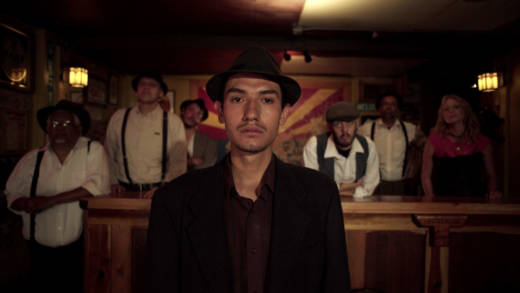“This town could keep a secret,” says one of the small-town Arizonans who appears in Bisbee ’17. But the people who most wanted Bisbee’s secret kept — the executives of a copper-mining company — are long-gone. And a centennial is a fine opportunity to discuss events of the past, however unspeakable they once were.
The not-quite-secret history told in Robert Greene’s thematically rich, narratively canny film involves the 1917 roundup and banishment of some 1,300 striking miners. A century ago, brother literally turned against brother when Bisbee’s copper baron mobilized a compliant sheriff and more than 2,000 deputized vigilantes against men organized by the Industrial Workers of the World (a union then considered the country’s most radical).
The primary issues were, as usual, money and control. But there was something else, Bisbee’s civic chroniclers reveal. About 90 percent of the workers who were expelled (to New Mexico, not from the country) were foreign-born. Most were Mexican and Eastern European in origin, and doubts about their allegiance to their new country were intensified by World War I fervor.
The episode is pertinent today, since the town is just seven miles from the still-contested U.S. southern border. “The word ‘deportation’ is alive with meaning” in Bisbee, a local commentator explains.


